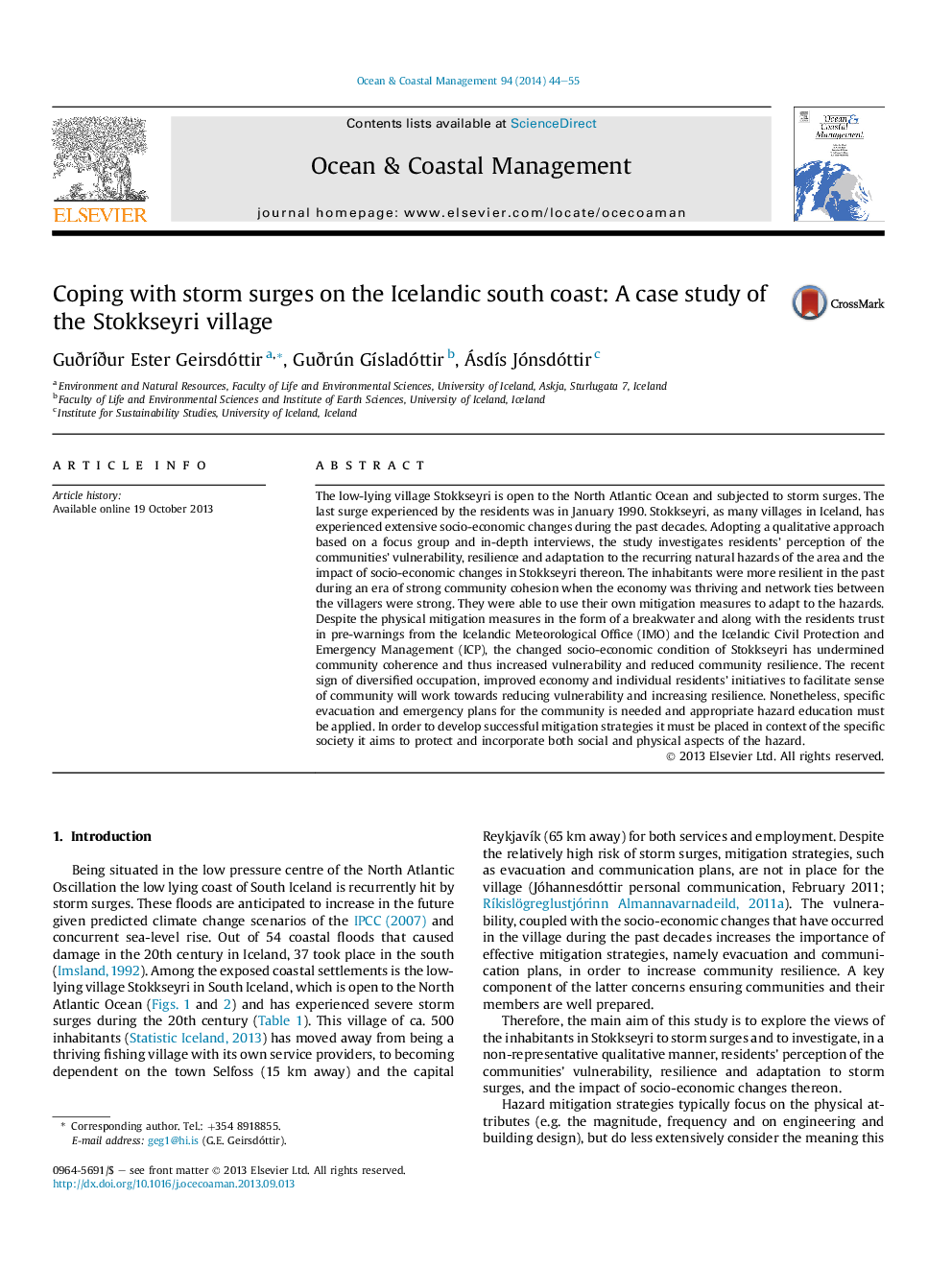| کد مقاله | کد نشریه | سال انتشار | مقاله انگلیسی | نسخه تمام متن |
|---|---|---|---|---|
| 1723754 | 1520532 | 2014 | 12 صفحه PDF | دانلود رایگان |
• Presenting community living with regular natural hazards and undergoing socioeconomic changes.
• Resilience and sense of community are important elements when facing natural hazards.
• Economy and general service deterioration has reduced resilience and increased vulnerability.
• Residents trust and rely on storm surge warnings from the Icelandic Meteorological Office.
• Hazard education will support community knowledge and appropriate response behaviour.
The low-lying village Stokkseyri is open to the North Atlantic Ocean and subjected to storm surges. The last surge experienced by the residents was in January 1990. Stokkseyri, as many villages in Iceland, has experienced extensive socio-economic changes during the past decades. Adopting a qualitative approach based on a focus group and in-depth interviews, the study investigates residents' perception of the communities' vulnerability, resilience and adaptation to the recurring natural hazards of the area and the impact of socio-economic changes in Stokkseyri thereon. The inhabitants were more resilient in the past during an era of strong community cohesion when the economy was thriving and network ties between the villagers were strong. They were able to use their own mitigation measures to adapt to the hazards. Despite the physical mitigation measures in the form of a breakwater and along with the residents trust in pre-warnings from the Icelandic Meteorological Office (IMO) and the Icelandic Civil Protection and Emergency Management (ICP), the changed socio-economic condition of Stokkseyri has undermined community coherence and thus increased vulnerability and reduced community resilience. The recent sign of diversified occupation, improved economy and individual residents' initiatives to facilitate sense of community will work towards reducing vulnerability and increasing resilience. Nonetheless, specific evacuation and emergency plans for the community is needed and appropriate hazard education must be applied. In order to develop successful mitigation strategies it must be placed in context of the specific society it aims to protect and incorporate both social and physical aspects of the hazard.
Journal: Ocean & Coastal Management - Volume 94, June 2014, Pages 44–55
